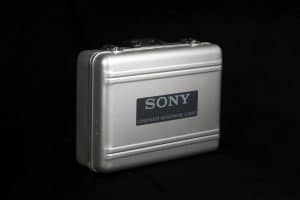Recording studios are high-tech environments and there are many technologies that make a recording studio function in the twenty first century. In this article we will look at how lasers have made a difference to the modern recording studio. We’ll dive into the actual raw details about how lasers work and how they help make things function more efficiently. So let’s look at recording studios laser physics!
What Recording studio technology uses Lasers
Lasers have augmented the digital era dramatically. This is because lasers can be switched on and off very rapidly, and thus, can transmit binary code. In the recording studio lasers can be found in CD and DVD reader-writers, fiberoptic cabling aka “light-pipe”, and alarm systems. Read more about recording studios here.
Understanding how lasers work
The word ‘laser’ is actually an acronym for Light Amplified Stimulated Emission of Radiation. Few recording studio engineers actually appreciate this fact about lasers. Let’s explore how lasers work at the atomic level. Essentially, when energy is imparted to an atom the electrons respond by jumping up to higher energy valence orbitals. When these electrons will spontaneously fall back down to their ‘ground state’ energy level and release their energy in the form of light. This light is released in a packet that we refer to as a photo.
Energy is ‘pumped’ into the atoms. This continues until all the electrons have had their energy states elevated to the upper orbitals. This will cause all these electrons to elevate to higher energy levels. When all these electrons have fully occupied their higher energy levels we refer to this atomic state as ‘population inversion’. Now for the important part. When we fire a photo at an atom that is in population inversion it causes all the higher energy electrons to fall back down to their ground simultaneously. Therefore, all of these electrons will release photos, or light energy, at the same time. The atom will, thus, emit a large amount of light. Now you know how the words ‘Stimulated’ and ‘Amplified’ got used in the famous acronym – LASER!
Fiber Optics and Lasers
Fiberoptic physics is extremely important in the digital age because this is how we harness lasers to transmit binary information at close to the speed of light. Recording studios utilise fiberoptic cables throughout. It may be a cable transmitting audio information from the computer to the audio-digital-converter or the internet cable taking data to another part of the world. Fiberoptic cables are the fastest that we can currently transmit binary information.
A fiberoptic cable is made from glass, glass-polymer, or polymers. The beam is aimed down the centre core. This how it reaches the other end of the cable. The refractive index of the core of the cable is varied according to the gaussian function and this is key to why the beam doesn’t escape the cable. The multiple beams (referred to as modes) arrive at the other end of the cable, simultaneously. The gaussian refractive index inside the core ensures that this occurs. This increases the efficiency of data transfer along a multi-mode fiberoptic core.
The future of recording studios with Lasers
Recording studios are becoming more digital-dominant and less analogue as technology progresses. It makes sense then that we will see greater use of laser technology in recording studios. There is new technology currently emerging that will assist recording studio engineers to place microphones on instruments robotically. These devices will use laser distance-guidance systems to help the computers determine the microphones location relative to the player and instrument. Recording studios are highly reliant on the internet.
Transferring large packets of digital data is becoming increasingly important! The internet is becoming a global recording studio. As the technology available for the internet becomes faster the latency will asymptotically approach zero. This will allow musicians, who are in geographically different locations, to jam with each other over the internet!
Solutions such as ‘wireless fiberoptic’ are becoming closer to reality. The internet could be sped up by astonishing orders-of-magnitude through the use of this technology. It must be noted that this technology is still about five years off in the United States! This technology is how we at Crash Symphony Productions stay ahead of the game in an ever changing technological world.




